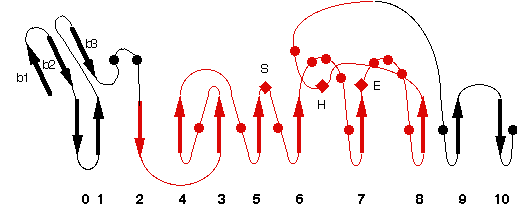5OJK
Name : Crystal Structure of human neuroligin-1
Revelation date : 23-Aug-2017
Family : Neuroligin
Gene_locus : human-NLGN1
PDB file : ESTHER: header of PDB entry RCSB: Full entry
Comment
Jonathan Elegheert, Vedrana Cvetkovska, Amber J. Clayton, Christina Heroven, Kristel M. Vennekens, Samuel N. Smukowski, Michael C. Regan, Wanyi Jia, Alexandra C. Smith, Hiro Furukawa, Jeffrey N. Savas, Joris de Wit, Jo Begbie, Ann Marie Craig and A. Radu Aricescu
Ligand :
References (1)
| Title : Structural Mechanism for Modulation of Synaptic Neuroligin-Neurexin Signaling by MDGA Proteins - Elegheert_2017_Neuron_95_896 |
| Author(s) : Elegheert J , Cvetkovska V , Clayton AJ , Heroven C , Vennekens KM , Smukowski SN , Regan MC , Jia W , Smith AC , Furukawa H , Savas JN , De Wit J , Begbie J , Craig AM , Aricescu AR |
| Ref : Neuron , 95 :896 , 2017 |
| Abstract : Elegheert_2017_Neuron_95_896 |
| ESTHER : Elegheert_2017_Neuron_95_896 |
| PubMedSearch : Elegheert_2017_Neuron_95_896 |
| PubMedID: 28817804 |
| Gene_locus related to this paper: human-NLGN1 |
Representative scheme of Prolylcarboxypeptidase structure and an image from PDBsum server

